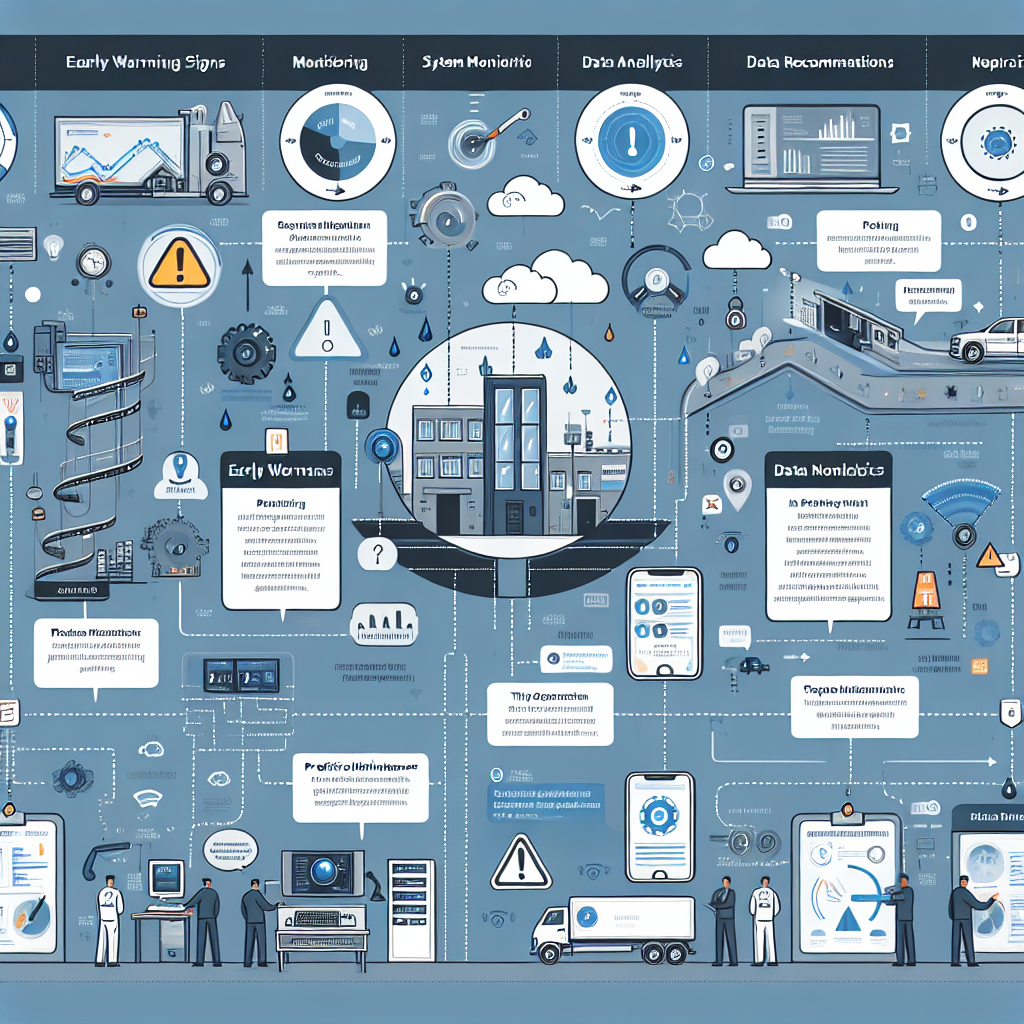
With the increased dependency on telecommunication systems in today's digital age, there is growing emphasis on ensuring system uptime and effectively managing any possible network downtimes. One forward-looking solution is predictive maintenance—a proactive approach that involves predicting potential system failure before they occur, allowing necessary preventive measures to be taken ahead of time.

In the context of phone systems, predictive maintenance brings a host of advantages that include decreased downtime, better resource planning, cost savings, and improved customer service, among others. The key driving force behind predictive maintenance is Artificial Intelligence (AI).
AI-driven predictive maintenance systems use machine learning algorithms and data analytics to preempt any potential system failures. These sophisticated algorithms analyze various data points, including historical information and real-time data from system hardware, to accurately anticipate imminent faults. The sheer quantity of data points used for analysis enables AI to make highly accurate predictions.
It's important to note that the success of an AI-driven predictive maintenance depends largely on the accuracy of the algorithms used and their ability to handle multitudes of data. As such, continuous system improvement and machine learning optimization are critical parts of ensuring that the AI system remains effective.
In conclusion, predictive maintenance for phone systems powered by AI showcases the immense potential of technology to optimize system uptime. It is a powerful tool that shifts the maintenance strategy from reactive to proactive, helping businesses to achieve operational excellence and superior network reliability.
In today's world of rapid technological advancements, AI-driven uptime optimization for phone systems has become crucial for maintaining effective business operations. AI technologies have given rise to new predictive maintenance approaches, significantly reducing system downtime and preventing potential failures. But how exactly does AI enhance predictive maintenance?
Primarily, AI algorithms learn from large volumes of operational data about a system's normal behavior aspects and anomalies. AI uses machine learning techniques to uncover patterns that human technicians may overlook, allowing for more accurate predictions of potential failures. This IoT data, coupled with machine learning, feeds into a model that predicts when a component of the phone system may start showing signs of wear or malfunctions. This allows us to perform preventative maintenance to mitigate the possibility of a breakdown, thereby increasing overall system reliability and uptime.
Another crucial way AI enhances predictive maintenance is through real-time monitoring and diagnosis. AI algorithms work around-the-clock, collecting and analyzing data to offer instantaneous insights. If a potential issue is detected, notifications can be sent immediately to prompt swift preventative action. Real-time data analytics powered by AI significantly reduce the lag between issue identification and scheduling maintenance thereby enabling optimal system uptime.
AI also helps optimize the maintenance scheduling process. By analysing historical data and current system performance, AI can determine the most effective time for maintenance activities. This means system performance doesn't have to be sacrificed for routine checks or interventions, enhancing overall efficiency and ensuring seamless operation.
In the rapidly advancing world of telecommunications, predictive maintenance is fast becoming an important strategy for not just sustaining but also enhancing the uptime of phone systems. With the integration of Artificial Intelligence (AI), such predictive upkeep is offering telecommunication companies a crucial edge in reducing maintenance costs.

Take the instance of VodafoneZiggo, a major telecommunications provider in the Netherlands. In an endeavor to streamline their maintenance management process, the company implemented an AI-driven Predictive Maintenance solution developed by IBM. The system is designed to predict and identify potential malfunctions even before they transpire. This has not only improved the uptime of their phone systems, but also reduced their maintenance costs. By ensuring their systems stay up, VodafoneZiggo has been able to offer uninterrupted service to their customers while lowering operational expenditure.
Another relevant example is Telefónica, a multinational telecommunications company. The company uses the AI-powered analytics of ACe (Application and Content driven end-to-end network) to manage and enhance the maintenance of their phone systems. The AI technology predicts possible issues and corrects them preemptively, which greatly enhances the system’s uptime and optimizes network performance.
Lastly, AT&T, one of the largest telecommunication companies in the United States, leverages AI in its “Your Network Can Do This With AI” initiative. The prescient system identifies and fixes potential problems in their phone networks, leading to maximum uptime and, consequently, optimal customer satisfaction.
In conclusion, AI-driven predictive maintenance has indeed begun to herald a transformative period in the telecommunications sector. It holds the promise to create a win-win situation - for service providers who achieve optimized operational costs and heightened efficiency, and for customers who benefit from consistent, high-quality phone services.
Over the years, businesses have realized that the cost of downtime in phone systems is enormous, potentially leading to significant revenue loss. This realization has increasingly shifted focus towards predictive maintenance. Predictive maintenance leverages the power of Artificial Intelligence (AI) to anticipate issues before they arise, ensuring uptime optimization.
However, integrating AI with existing phone systems is not without its challenges. The two most common challenges are compatibility issues and the need for extensive data for effective AI modeling. Fortunately, solutions are available to tackle these challenges.
Compatibility issues can arise when the existing phone system is outdated or uses proprietary technologies. To overcome this, cloud-based phone systems can be deployed. These systems easily integrate with AI technologies and eliminate the need for constant handset upgrades.
The second challenge of extensive data requirement for AI modeling can be addressed using advanced data collection and analysis tools. Phone systems produce a wealth of data, but gathering and making sense of this data can be daunting. Fortunately, AI-driven tools, like IBM Watson Studio, can aid in efficient data processing and model building.
AI-driven predictive maintenance for phone systems has the potential to revolutionize how businesses manage their communication infrastructure. With the solutions to common challenges at hand, the integration process becomes simpler and brings immense benefits like optimized uptime, lower maintenance costs, and enhanced overall productivity.
In the rapidly evolving technology landscape, Artificial Intelligence is playing an increasingly significant role in defining the future of phone system maintenance with Predictive Maintenance at its forefront. As AI becomes more sophisticated, it continues to offer revolutionary potential in identifying system errors before they escalate, maximizing uptime, and reducing costs.

One of the key trends to watch is the increased integration of AI and IoT (Internet of Things). The fusion of these technologies opens the door to a world where data from various phone system components can be constantly monitored and analyzed in real time, leading to a smarter and more predictive approach to maintenance. Not surprisingly, according to Grand View Research, the predictive maintenance market is expected to reach over $28 billion by 2025, a testament to its growing relevance.
Additionally, the application of Machine Learning is becoming increasingly common in predictive maintenance. Unlike traditional systems that follow predefined rules and triggers, Machine Learning adapts to patterns and fluctuations, innovatively identifying potential failures before they occur. It is this flexibility and adaptability that makes Machine Learning a game-changer in predictive maintenance for phone systems.
The future of phone system maintenance also lies in the emergence of Autonomous Maintenance, another trend fuelled by AI advancements. Autonomous maintenance models, capable of conducting repairs and enhancements on their own, are likely to significantly reduce down-time and human intervention, boosting efficiency and profitability.
Of course, these advancements come with challenges, including privacy concerns and the need for tighter security measures. However, as technology evolves, strategies to mitigate these issues are likely to emerge. In fact, the rise in cybersecure IT architecture suggests a promising avenue for addressing security concerns.
In conclusion, the future of phone system maintenance promises to be game-changing, with AI, Machine Learning and Predictive Maintenance at its core. As organizations strive for seamless communication, the upkeep of phone systems will transition from being a regular task to a strategic initiative, significantly impacting the bottom line.
Start your free trial for My AI Front Desk today, it takes minutes to setup!








